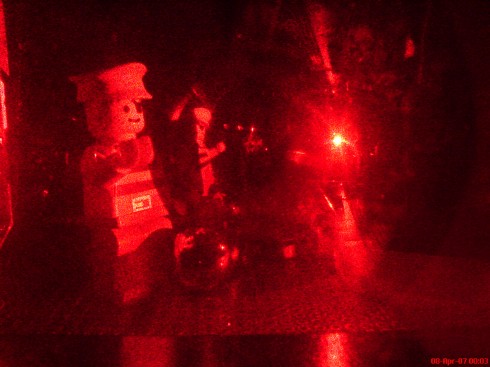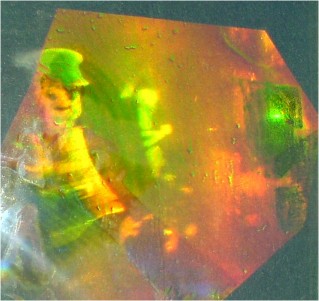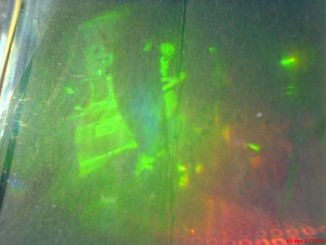I am really happy that I successfully recorded a really bright transmission-holo on PFG-01, using the EDTA-bleach, with a single beam setup. It's a LEGO-man, standing next to a small and a big silver ball, mirroring himself in it.
The transmission-holo:

I could catch the reconstructed image on cardboard, so I tried a copy on H2, also single beam setup. Exposure 20sec with 6mw HeNe on PFG-01, processing Dokumol and KDi-Bleach.
I had problems with TEA (streaks, drying difficult), therefore I chose Pyrochome processing for the desired color shift.
View 1 (sorry for the dirty processing, looks as if my lab is too dusty, but I think you can guess something)

View 2

So, after the first enthusiasm that gave rise to some questions: Why can I see 3 different colours? I looks almost like green, yellow and red together. And I didnt record a rainbow hologram, at least not intentionally.
In reality, the trousers of the LEGO-man were red, and his shirt striped black-and-white. Now I got green and yellow! The botton is highly reflecting and got red.
The most important issue is, that the viewing angle is very narrow. Only from one certain reconstruction angle I can see the holo, and it's very luminous. I guess it's got to do with my compact geometry, which also causes ghost images of the reference-beam mirrors. (?)
Best regards,
Max